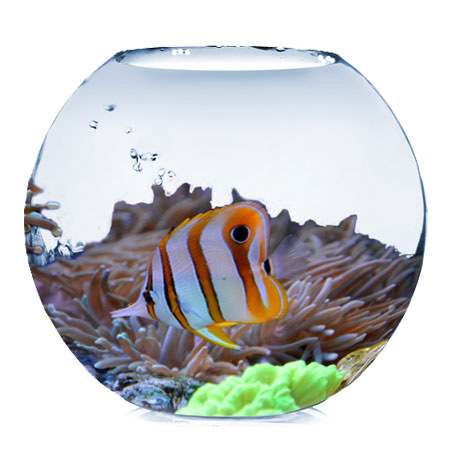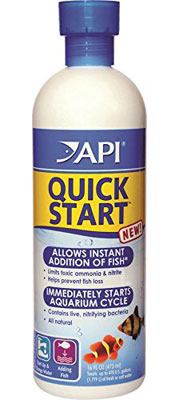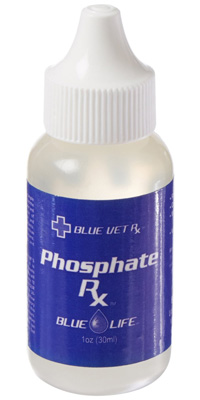There are different sources of aquarium water. All are not suitable for it. So treatment is necessary. Moreover, you have to feed the fish. This can also create problems. The main aquarium water problems are algae, ammonia, nitrite, nitrate, phosphate, hardness, pH, alkalinity and temperature. In addition you have to always remember that not to add too many fish at a time or do not overcrowd and overfeed. These will create problems to your aquarium.
Aquarium water test
It is necessary to test your aquarium water regularly. This can be daily, weekly or monthly. The important tests are ammonia, pH, nitrite, and nitrate. These test should be perform weekly. You have to test temperature regularly.
Tap water
Tap water may include chlorine and chloramines because most of the municipal water is treated with chlorine to kill harmful bacteria or other pathogens. These chemicals can harm to fish and biological filter. So these chemicals should be removed before using them into aquarium. You can use different chlorine neutralizer or a chlorine remover such as dechlorinator, sodium thiosulphate, as a chemical additive. You have to make sure that you use a right dechlorinator because all dechlorinators does not remove chloramine from the water.
Water Changes
You can change up to twenty percent of the water each week depends on water quality.

Algae Treatment
A small amount of algae can be a source of fish food in the aquariums. So it is not harmful to fish, though it may look odd. On the other hand, excessive amount of algae growth is harmful to fish or other aquatic animals. Water, light, and nutrients are responsible to overgrowth of algae in the aquariums. It is the common problem in aquariums and ponds. So before aquarium water treatment you have to know what the root cause is.
Sometimes you can able to remove algae in manually. If it is not possible then you can use different chemicals to remove but you should bear in mind that the entire chemical is not suitable for all type of aquarium animals. Some are suitable for fish but they are not suitable for snails, live plants, shrimp, lobsters or any other invertebrate. So carefully uses the chemicals. Otherwise it will create great problems. If you have algae problems then you need to Phosphates test.
Ammonia problems
High Ammonia level in aquarium is one of the most serious problem. It can bring health problems of the fish or aquatic lives, even death of them. Newly set up aquarium will go through a process that some of biological colonies begin to grow quickly which are responsible for increasing ammonia in the tank. Moreover, too many new fish added at a time, die off bacterial colonies, filter fails due to power or mechanical failure are also responsible for increasing ammonia. Loss of appetite, red or purple color, tiredness, lay at the bottom and fish gasp for breath at the water surface are main symptom of the ammonia increases.
If the ammonia reaches risky level, then it should be taken a necessary action to reduce it. You can use different ammonia binder to decrease the ammonia level. For example available form of ammonia binders are liquid and filtration media. You can use the ammonia binder when the ammonia is extremely high whereas the filtration media can be used when levels are elevated, but not immediately critical. It should not exceed 0.30ppm.

Seachem Prime 500ml
Nitrite problems
Nitrites is the another major killer of aquarium water fish. When the level increases then the fish blood reduces its ability to carry oxygen. Brown gills, rapid gill movement are the main symptoms. It is better to keep nitrite level up to 0.6 ppm. Above 1.0 ppm may be dangerous to fish. You can reduce excess nitrite by changing partial water. Moreover you can also reduce toxicity of nitrite by adding salt to the water.
Nitrates
Nitrates are less toxic then ammonia or nitrites. It does not directly affects on the fish at lower level. But at higher level, it may effects on their growth and can decreases oxygen levels. Nitrates will help to overgrowth of algae, even at low level like 10 ppm. If nitrate levels exceed 50 ppm then it should be reduced. You can reduce the level of nitrates by changing a portion of water or using filter media. Test monthly to keep the levels within the safe range. It produces through the nitrogen cycle. The main symptoms are loss of appetite, lay at bottom of tank, and rapid gill movement.
Nitrogen Cycle
Your aquarium water should have well balanced with beneficial bacteria for nitrogen cycle. These bacteria break down the unhealthy elements within the water. The cycle has three stages. The cycle begins with fish and their feces, urine, and uneaten food which are converted into ammonia compound shortly. Then these converted into Nitrite with the help of Nitrosomonas bacteria. At last stage the nitrites converted into Nitrates. This nitrogen cycle is a vital part of every aquarium.

API Quick Start Water Conditioner for Aquariums
pH
pH is one of the important parameter for aquarium. There is no exact pH range. It may differ on the sources of the fish. Salt water and fresh-water fishes need different pH. Normally salt-water fish needs higher pH like 8.0 or above. On the other hand fresh-water fish needs lower pH ranges like 7.5 or below. pH is not a static parameter, it can change with time. If the pH increases then you can consider it may be increases ammonia. Moreover, fish and plant waste, water evaporation, topping off water, CO2 and water hardness can changes the pH.
To lowering the pH you can use acids or filtered water that has low buffering capacity. Otherwise you will not achieve your target. Buffering media would tent to remain same pH. To raise the pH you can use a base like sodium bicarbonate. As this base is a partial soluble compound so you can get benefit of buffering the water. If the pH does not match for specific spices of fish then it may stress on the fish. Sometimes you can loss fishes. It is better to test once a month. Generally, 6.0 to 8.5 pH level is excellent for fishes.
Phosphate problems
Including well maintained aquarium all of the aquariums are present phosphate. It may be organic or inorganic. The fish waste, uneaten food, plant decay, phosphates containing lower quality foods, dying algae, dead fish and pH buffers can increases phosphate levels. Sometimes it also depends on water sources. It does not directly harm to the fish. It helps to overgrowth of algae by providing nutrient.
If the phosphate level is too elevated, you can reduce it by using phosphate control additives or carbon filter media. Moreover, water changes and properly tank maintenance will also help to reduce it. The ideal levels of phosphate are 0.1 ppm or below.

Blue Life USA Phosphate Rx Aquarium Treatment
Cloudy water
Occasionally, some fine particles like dirt, sand, silt or any other debris can creates the cloudy aquarium water. It makes the aquarium odd looking. To resolve this problem you can use flocculants, because different filter media does not able to remove these fine particles. The flocculants accumulate them which are removable.
Heavy metals
Trace amount of certain heavy metals like zinc, copper, lead and cadmium in the water are important to the health of fish and the stability of the water chemistry. But very high levels can be a problem as well.

API Freshwater Master Test Kit
Temperature
Temperature is another important parameter for aquarium water. If it is quickly changes then it will harmful to fish or aquatic lives. You can use aquarium heater to keep stable water temperature.